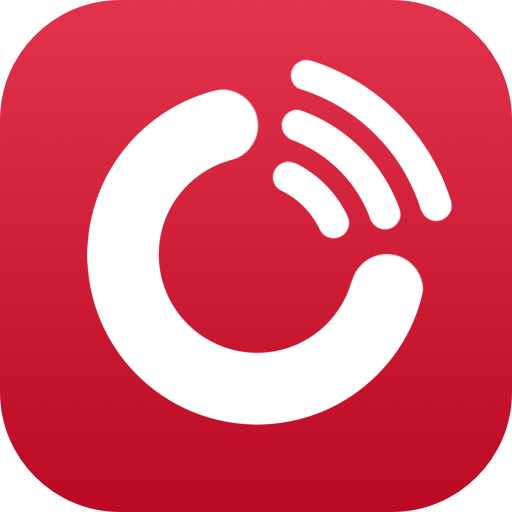Katya Eckert: Founder & CEO of A DOMANI
Episode 753
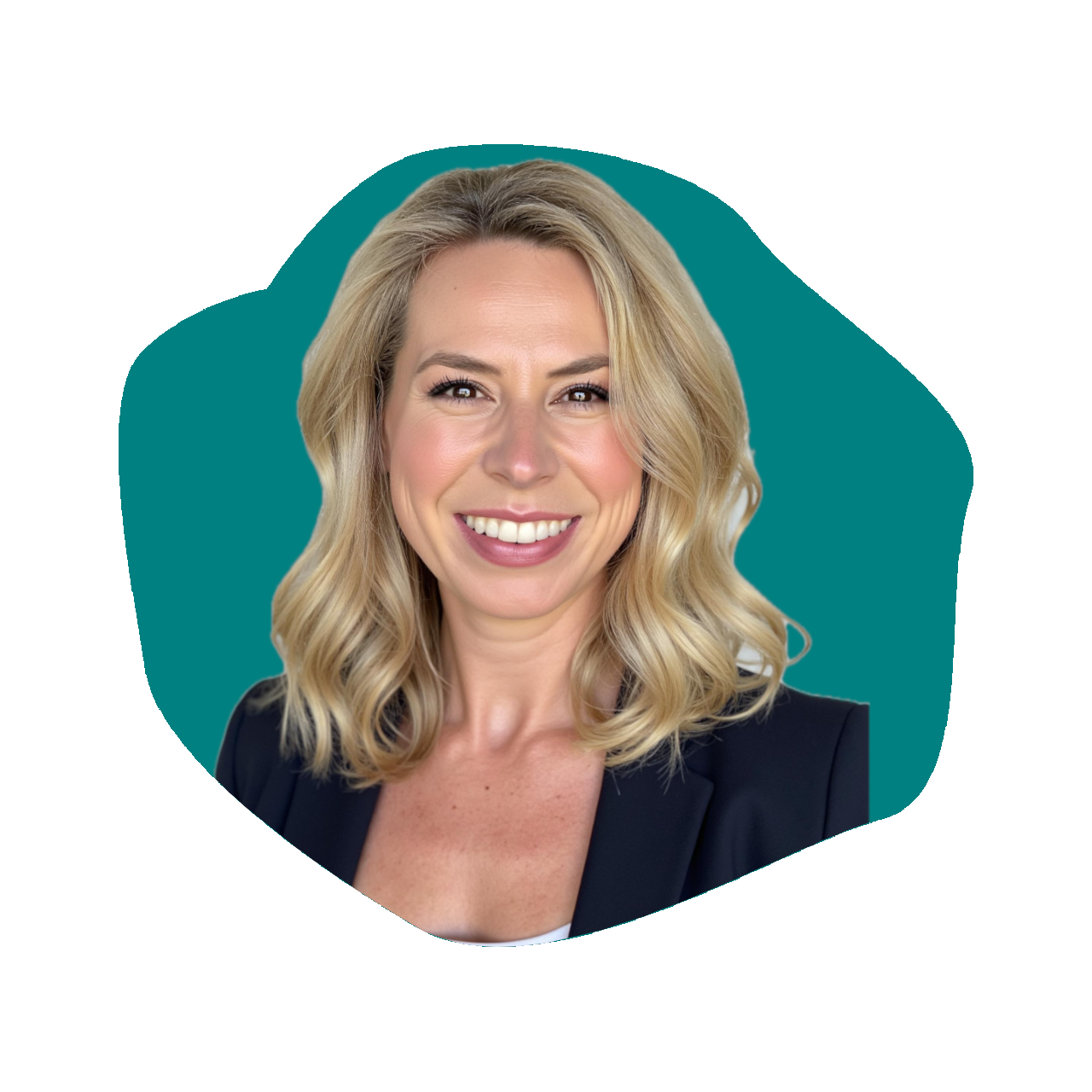
On today’s episode, Kara welcomes Katya Eckert, Founder & CEO of A DOMANI, the emerging brand pioneering cooling sleepwear for women going through hormonal changes. Katya’s inspiration came from her own postpartum experience, when she was blindsided by night sweats and frustrated by the lack of elegant, high-quality solutions on the market. Determined to create something better, she set out to build sleepwear that was not only functional but also luxurious and beautiful.
In this conversation, Katya shares her journey from a 15-year career in institutional finance to building a science-backed DTC brand. We talk about the white space she saw in the sleepwear category, how she developed A DOMANI’s innovative fabrics and silhouettes, and what it takes to create products that solve real problems for women while staying true to luxury and design. This episode is packed with insights for founders, innovators, and anyone passionate about building brands that challenge the status quo. Don’t miss it!
Resources from
this episode:
Enjoying this episode of #TheKaraGoldinShow? Let Kara know by clicking on the links below and sending her a quick shout-out on social!
Follow Kara on LinkedIn – Instagram – X – Facebook – TikTok – YouTube – Threads
Have a question for Kara about one of our episodes? Reach out to Kara directly at [email protected]
To learn more about Katya Eckert and A DOMANI:
https://www.instagram.com/adomanisleep/
https://www.linkedin.com/in/katyaeckert
https://www.adomanisleep.com
Transcript
Kara Goldin 0:00
I am unwilling to give up that I will start over from scratch as many times as it takes to get where I want to be. I want to be we just want to make sure you will get knocked down. But just make sure you don’t get knocked out, knocked out. So your only choice should be go focus on what you can control. Control, control. Hi everyone, and welcome to the Kara Goldin show. Join me each week for inspiring conversations with some of the world’s greatest leaders. We’ll talk with founders, entrepreneurs, CEOs and really, some of the most interesting people of our time. Can’t wait to get started. Let’s go. Let’s go. Hi everyone, and welcome back to the Kara Goldin show today. I’m joined by Katya Eckert, CEO and founder of A DOMANI. I’m not going to pronounce it as cool as Katya is, but, but we will. We will go with this for now. It’s such a beautiful name a brand pioneering cooling sleepwear designed for women going through hormonal changes. I think it’s more than hormonal changes just to keep you cool. It’s such beautiful, beautiful sleepwear, and I’m so excited to be a fan. So her journey is inspiring. After the birth of her daughter, she was really blindsided by this whole postpartum night sweats thing that goes on that many people know about, and so she created her own solution. With a background in institutional finance and luxury lifestyle, Kara pivoted into consumer goods to launch A DOMANI, a brand built on the principle that women deserve to be cool. I love that. Love Love, love that. So I can’t wait to dive into her story from years and finance to building a science back DTC brand to what it takes to create beautiful products that are so soft and wonderful and are as functional as they are beautiful. So Katja, welcome to the Kara Goldin show. So excited that you’re here.
Katya Eckert 2:10
Thank you so much for that beautiful introduction. It’s such an honor to be here.
Kara Goldin 2:14
Thank you so much so. So actually, I don’t usually start with this, but I love the pronunciation that you give your name. And can you talk a little bit about the brand and how you came up with the brand name?
Katya Eckert 2:32
I came up with the brand name on a walk. That’s where I do my best thinking. And the brand is A DOMANI, which in Italian means until tomorrow, which is how we hope to sleep until
Kara Goldin 2:45
tomorrow. I love it. I love it. So, okay, so can you talk about A DOMANI and how it is different from everything else in the sleepwear space? You did not come from this industry. I gave a little glimpse of kind of the backstory, but I’d love for you to take us through what were you thinking starting this company and this and I’m so happy that you did.
Katya Eckert 3:10
Thank you. Me too, because I haven’t worn anything else since. So I was in institutional finance. I was cold calling hedge funds all day long and pitching trades and pitching strategy in equity derivatives. Don’t ask me what that means. I don’t know either anymore. And I got pregnant with my daughter, and after she was born, you know, there’s a lot of emphasis on what happens to to the baby, right? Like, everybody’s giving you parenting advice, everybody’s giving you what you need for the baby, but nobody talks about the mom. The mom is left out of the entire equation. And so other than here’s your six week like, you know, note go forth, right? So I am nursing my baby in the middle of the night and I am just pouring buckets of sweat, right? Like I’m waking up to change my pajamas. I’m waking up to nurse my daughter like you’re already not sleeping, and I’m what is happening, like nobody explained to me that because you double your blood volume while you’re pregnant, that you’re it has to go somewhere, like you’re going to this is what happens to a lot of women. And I was ordering seemingly every single pajama pair on the market, and high, low, whatever, and at some point, like my husband peeked into the nursery and was like, have you seen our credit card bill? Like you have a company here? And I was like, Haha, you know? And then after my daughter turned a year, I was like, I do have an idea. There’s still nothing out there. I’m still seeing the same concept for sleepwear that we’ve been seeing since what 1970 like we. Went from that, like, frilly 1950s nightgown to like the collars and the buttons and like the waistband that’s elastic and doesn’t really fit. And like, this is now what we think of as pajamas, the same size top and bottom. And no one has revisited this concept. And personally for me, I can’t sleep in a collar, right? Like I was starting to, like, even just go after the features, forget the fabric, features that were like, just not functional. If you are sweating buckets, you don’t want a collar. You don’t want your chest popping out of these buttons that unbutton themselves for some reason. Like, you don’t want, like, that little like, love handle, muffin top popping over the elastic waistband that makes no one feel good. And then, you know, I was like, so that’s a part. And then I was like, well, it has to be like a performance fabric before pajamas. So I started looking at performance fabrics, and then quickly realized that, you know what, I don’t want anything that is a thing that is a synthetic fiber. Cotton was clearly not working, because I was sleeping in like, old cotton T shirts or buying cotton pajamas, and they were soaking like, like a mop on my chest, like I could still feel it, and I didn’t want polyester, because we’re talking about PFAs, we’re talking about endocrine disruptors, and this is for times when women are undergoing huge times of regeneration of our skin, of our endocrine system, right? And we want something that, like nourishes our skin, and the whole entire process that we’re going through that honors that and keeps us comfortable. And so it immediately struck, struck me that it had to be a natural fiber. So then I went down the entire route of natural fibers, right? So, like we looked at bamboo, which is actually very chemically heavy. Then we looked at other short staple fibers that, like they have their own personality, these cellulosic fibers, cellulosic meaning it comes from plants. And to make them well, you have to have a lot of expertise. And so it just sent me down this entire journey of like, finding, like, the best of the best in the world, of people that specialize in cellulosic fibers, and can do them well, where they don’t pill, where they’re durable, where you’re not contributing to textile waste. I’m on a tangent, but I could talk about this.
Kara Goldin 7:31
I love it. No, it’s It’s terrific. So when you were thinking about this idea, did you actually have an inkling that you’d actually go start a company around this concept of solving a problem for yourself first, the
Katya Eckert 7:48
second, I decided that I was going to start it. I knew I was going to I knew I knew what, what I wanted it to be like. I immediately, in my head had like, I want this to be the next fix. And I have that feeling every single day I love it, you know, like I’m building, like, the next company that’s a home, like recognized brand. This is what people associate with all of our times of menopause, perimenopause, cancer treatment like this is what we turn to. This is the solution. And what year did you actually start? I launched in November of 22 but I had been working on it for about two
Kara Goldin 8:28
years. So you came from a career in finance. What was it like making such a big pivot? I always think it’s so interesting, because especially with so many people that I know or have had on the podcast from finance, they think they really understand what it takes to, you know, be a founder or launch a company, but then they get in it and they’re like, I had no idea. I mean, there’s so many aspects of it that they don’t know. So talk to me about your experience.
Katya Eckert 9:01
Yeah, I agree. I mean, I didn’t go into it thinking that I, like, was the expert at all by any means. I think, you know, it’s like that, like, like, that Zen concept of beginner’s mind, like, you just have to keep asking the questions, right? So, like, that’s how I started with thinking about the fabric. Like, I really wanted to start from a place of product, right? So very, very product focused, because I think, in this very congested market with so much saturation on content, advertising, everything, unless you have a good product that people will come back and buy and talk about and talk about very fondly, you’ve got nothing. Got nothing. You can have the best marketing in the world, but if you don’t have a good product. Sayonara, so I really wanted to focus on that, and that was my primary focus on getting good product. Right? And from there it was, I mean, I should have had, like, a more planned out go to market strategy, you know? But I think a lot of times in this, like entrepreneurial journey, it’s a lot of resourcefulness, and you really don’t know what’s going to hit, right? Like, at some point, some things are going to hit and some things are not. So when we started, we did $30,000 of business, and, like, the first month, and that was fantastic, wow. And that was the go to market strategy, like go to friends and family, and we had a huge response from friends and family and a lot of repeat buyers. And then a couple things happen all at the same time, I got pregnant with an IVF transfer after a long journey. Two weeks after that, my mom got diagnosed with metastatic breast cancer. I took care of her the entire time when I was her medical proxy, did all of her medical care with her. She died six months later in A DOMANI. She wore A DOMANI The entire time through hospice, to the point where the nurses were like, where the fabric is touching, there’s no bed sores. This is pretty fantastic. I was like, wow, I have something else here, right? And eight weeks later, my son was born. He’s about to turn two. Wow. It was like, I had to go on like, emergency break, you know, like I had to let go of every single one of my consultants. And I was like, we’re just gonna keep this on life support. I have all the inventory, and then it’ll build so in that in in the meantime, I wanted to continue to align the brand with the medical community. So for me, it’s very, very important that we’re not talking about medical misinformation. We’re really advocating for women to get the help they need, whatever it is that they’re going through. And I was networking through a lot of with the with a lot of the doctors, like the meno posse on Instagram. And one of the doctors I had connected with was Dr Jessica Shepherd, who’s a great follow if you’re not following her. And she tried the pajamas, and she just absolutely loved them. And she’s like, I’ll post about them. And then, you know, time went by and we stayed in touch, but she hadn’t posted. And literally, a year later, in January of this year, I’m sitting in the parking lot in Greenwich, Connecticut, waiting for my husband to come back from New York City of like, the trade station. And I opened my Instagram, and it’s Jessica Shepherd, look at where I got you printed. And it’s Oprah’s top 50 menopause
Kara Goldin 12:49
products. That’s amazing. That’s amazing. It was
Katya Eckert 12:53
incredible. It was incredible. And then after that, everything kind of went gangbusters. From there, I was on CBS mornings. I was on changing the game, and then, like, the pure campaign hadn’t stopped, and the business had graduated to a brand new level, you know, almost overnight.
Kara Goldin 13:10
You know, it’s so interesting to think about so you launched it in 22 but you started thinking about it two years prior, and I think during, you know, between even 22 to now, there has been an emergence of people being much more open about that experience during menopause and and other, you know, many companies starting around this as well. So I’m sure that was helpful, right? Because then people were looking for solutions, definitely.
Katya Eckert 13:46
I mean, when I started, it wasn’t a conversation. It was very nascent. No one was talking about
Kara Goldin 13:51
it, yeah, and it was almost, I bet, sort of a taboo to talk about it, right? I mean, it’s, it’s so interesting. Now people just talk so openly about
Katya Eckert 14:02
how it’s weighted vests all over your Instagram.
Kara Goldin 14:05
Yeah, no, it’s so it’s so, so true. So when you first launched, how many SKUs did you have when you six? Six SKUs? Okay, can you talk about how you made the decision around that?
Katya Eckert 14:18
Yeah, absolutely. So one of the things that I found, as you know, it’s just doing my informal market research, but women really are particular about what they sleep in. Some women will only sleep in shorts. They will never sleep in pants. Some women will only sleep in dresses. Some women really want long sleeve and shorts and so and women are different sizes, top and bottom. Like, stop putting us in the same top and bottom sizes, just like bathing suits, like they find bathing suits are no longer sold in the same sizes top and bottom and pajamas are not yet have they haven’t caught up yet. And so I want. To come out with just a very small capsule collection of those offerings, pants, shorts, tank, short sleeve, long sleeve and dress. And then I’ve since added only one more pair of pants and one more dress. And I’m just really trying to keep it very, very focused. And it’s working. I mean, people are very, very happy with the styles we spent. We spent so much on the development of those styles and testing them and doing the technical size charts, everything, and they’re doing well. So, you know, I don’t, I don’t intend to really fix them. I will add a few more styles. We have a new collection coming out in October, which I’m super excited about, and that the styles will get tweaked for the weight of the fabric. Um, but we’ll continue with these styles as well.
Kara Goldin 15:55
That’s awesome. So let’s talk about the actual fabrics and the construction. Because I think for many people, you know, your company is known for working, but there’s some people who kind of want to know, why does it work? So can you talk a little bit about that and and maybe even some of the challenges and kind of trying to, like, how important is it to get it out there? Because I think so often there is so much more that goes into making a product than and founders are are frequently trying to figure out, do I how much do I talk about that? Is it just, does it just confuse people? Does it get people not to want to try the product because they have to find out more information. So I’d love to hear a little bit more about that.
Katya Eckert 16:44
Yeah, absolutely, I I’m one of those people that really likes to know what’s in my product, too. I’m like, a total geek that way. And I think you’re right. I think some people don’t want to know about it. They just want to know that it works. So we use in this current collection, we use micro 10 cell, which is a Lyocell, which is a cellulosic fiber coming from plants. The plants that are in this micro 10 cell are eucalyptus, Birch, pine and beech wood. And how that works is that wood is taken down to a pulp. The pulp is spun into yarn, which is what we call it in the industry, thread, and then we make the the material, and then we dye it and finish it. And then you have this beautiful, beautiful product. It is a living, breathing thing. So Lyocell, something that people don’t really know about it is that it has its very own unique behavior. So, for example, the weight of the fabric has nothing to do with the effectiveness of the fabric. So you have the pajamas and you know, they’re like substantial, but they’re so cooling, and they feel so cool on the skin, and they don’t feel heavy, but they have that, like luxurious, substantial quality to them. Lyocell does not abide by the rules of light versus heavy. It’s really just the feel preference. Yeah, really interesting, fascinating, right? And so it’s like the wood component stays within the fiber. So it rains in a forest, the trees dry quickly, right? And so it the trees are going to be resistant to microbes. Same thing, your pajamas are not going to smell for many days, and they’ll still have that like just washed feeling on day 234, so you can keep wearing them less laundry, which is, you know, great for lazy moms like me, or, you know, if you want to be environmentally friendly. And one thing that I will say, is interesting to me and as a founder and somebody that insists upon using these types of fibers, is that there is a reason why people do not use them, why you really won’t see them in a lot of brands, because they are tricky. There are very few people that know how to do them well, there are very few people that know how to do them with durability in mind and without harmful chemicals. And things will go wrong in the production of these fibers all the time, because you will get to a batch of thread where the wood was weak. That’s what happened, interesting and like, you have to start over and it there’s a lot of QA and testing to make sure that you have this consistency in the fabric. And that, I will say, is one of our. Greatest challenges to make sure that we’re delivering this consistent product, but we are using natural fiber, and you just cannot replicate like, you know, a polymer with
Kara Goldin 20:13
cellulosic fiber that is so, so interesting. So did you learn that, like after you launched. Or were you sort of like, you know you’re already in it at this point? Or did you learn this issue before you actually launched your first product?
Katya Eckert 20:32
I learned it after I launched. I learned it after I launched. That fabric that we have went through all sorts of testing with massive like global testing organizations for bursting. So I wanted to make sure the quality of the fabric was really, really good. And this is like an insider, kind of inside baseball type of thing. If you’re starting a garment company, make sure you put it through every single test that you single test that you want, and the bursting was like above and beyond anything that they could possibly measure on Their psi scale. And then not many, but I’ve had a couple, just a couple, clients come to me being like, I have a hole. I’m like, What the heck is going on? How do you have a hole? I have the best bursting standards of the industry. Like, here’s, you know, like, I’m not showing them the data. I’m obviously like, here’s like, here’s a replacement, because I have all of my samples, and they’re all in pristine condition still, like, you know, many, many, many, many, many items and 1000s of customers. And it went through trial and error where I was like, wow, it’s because there’s a weakness in the in the thread, because of the cellulosic fiber, what do you do? You have to just be open, transparent. Here’s a replacement. You know, all done, but it really made us rethink the like, not rethink, but like add a lot more steps in the quality control to make sure that we’re not getting these weak spots.
Kara Goldin 22:26
So, so interesting. So, how has tariffs affected you as a small business? And what can you talk about that, you know? How have you been able to manage it, maintain sort of a smile on your face through it all.
Katya Eckert 22:45
You know, it actually hasn’t been that bad for me. I mean, I am, in a way, I guess I’m on top by 1% so I was manufacturing in Mexico, and now full production in Portugal for better quality control all around and I was already paying a pretty heavy tariff into Mexico. I was taking the fabric in Portugal, taking it to Mexico, putting it on a cargo ship, taking it to Mexico, having the production done in Mexico, flying it over to the US. So Mexico has a very protectionist tariff on European fabrics, I was paying 22 and a half percent. So now it’s a, I believe, a 15% tariff coming over from Portugal. So my labor costs are much higher in Portugal, better quality control, higher labor costs, etc. So I’m paying for that, but it actually winds up evening and evening out. So tariffs so far so good remains to be seen. But I think, you know, there’s, as I was planning the business I built in margin for uncertainty and business continuity, and I think that that is really an important thing for founders to do, is just like you really have to build in a little bit of buffer for for risk.
Kara Goldin 24:08
Yeah, definitely, so, but that’s that’s so interesting to hear. So it’s I didn’t realize that Mexico had that tariff for fabrics, even though you’re a US company, you’re and that’s very common, especially for apparel companies. So really, really interesting. So you’ve built a career and two very different industries, and finance and consumer products or apparel. What have those experiences taught you about resilience and risk taking and kind of, I mean, I feel like, obviously, I just met you, but I feel like you’re, you’re learning a lot, right, which I think is always the challenge for people who have sort of been able to break the glass ceiling, so to speak, or continue to rise and in an industry. That they just sort of know it backwards and forwards, and they never anticipate how much they’ll learn by going and launching company that they’ve been thinking about, or, you know, launching products. And I think that the I’m sure you’re using different parts of your brain for sure, and and developing company that you know, you’ve got to develop a whole new network of people that are maybe know a little bit more than you do in this industry, but then also try and figure out who’s actually the person to listen to. You were talking about different podcasts that you listen to, all of those things, but when I think about the benefits and also the the sort of things that I see so often in people who have had another career, I really think that the resilience and the risk Taking are definitely part of it, but also it’s definitely a, you know, super interesting and consistent across many, many founders that I meet.
Katya Eckert 26:09
Yeah, yeah. Well, all of that, right? I think the learning is the best part. I mean, that’s my favorite part. Is because you’re it’s a new day every day, whatever you think your process is that it changes by the minute. And, you know, I think definitely there is a resilience from career change. But I think, you know, I’m an immigrant. So I, my family immigrated from Soviet Russia in 1991 like during the during the fall of communism, and my parents came over with absolutely nothing. My dad was here doing an exchange program. My mom, my brother and I came over, like a year and a half later, she had a box of books for my dad, my brother had his guitar, and we had one suitcase for the three of us and $100 in our pocket, and that was it. And so I grew up with the the beacon of my parents, of like, we left everything and built a life for you. And so there is no squandering here, right? And I think that that is like a very, very universal thread through immigrants, like children of immigrants, immigrants themselves. So I definitely have that. And there’s no option for failure, right? Like, there’s just an option for pivot. And I think that that’s kind of how I have to think about it. And it is, it’s it’s such a mental exercise every day, every single day, you have to tell yourself, like, this is what’s happening. And whenever a problem comes up, you’re like, I have to be in this creative problem solving mode, right? And yes, for sure, certainly raise your blood pressure. But it’s, you know, there, there are a lot of lows, there are a lot of highs. And I mean, I’m just, I’m so thrilled to be doing it, right, so I
Kara Goldin 28:09
love it. Well, finally, you talked about the new launch, the new collection that’s launching this month, in October. So can you talk a bit about the new collection and and what you’re most excited about,
Katya Eckert 28:24
can I get a little sciency?
Kara Goldin 28:25
Yeah, yeah, definitely.
Katya Eckert 28:29
So our current collection has this, like, really luxurious weight, as I talked about before. So people have a preference on weight. So some people really love this weight. Some people have been asking for, like, a lighter weight. So I had been sourcing for a lighter weight for as long as I’ve been launched three years, and I really wanted to make sure that we put something unique into the market. And so I’m using a fabric that’s never been used in sleepwear before. It’s not even really used in anything other than like, couture materials. It is a micro modal that’s been mercerized. It’s also knit at a 44 Gage. So I know all of that is mumbo jumbo, but if you think about a sweater like this, sweater is knit at like, call it a 10 Gage. So a 44 Gage is 4x and that is the density of the knit. So the more dense you can knit something, the finer the thread you can use. So this winds up being really substantial, but also extremely light, like as if, like you’re it’s like a god, almost gauzy, but beautifully draped, and then it undergoes this process called mercerization, which is a new process, and in a pair in fabric. And what that means is, if you’ve ever seen, like the conditioner commercials, you know, like they coat it, and then, like the split end. Go like, very smooth. So what happens in mercerization is they inject the fiber. So basically, like Juvederm for fiber interesting, and it makes this fiber feel bananas. It’s like, it’s like the silkiest, silkiest, softest, shiniest, like the most beautiful hand feel you’ve ever you’ve ever experienced. So I’m so excited. We’re launching it at Canyon Ranch October 23 and it’s going to be online as well. And we’re going to start with the dresses in October, and then we’ll have separates launched in November. I’m really thrilled.
Kara Goldin 30:40
That’s so exciting. I can’t wait to try it. That’s that sounds beautiful. So congratulations and Kara, thank you so much for joining us today. And I love everything you’re doing at A DOMANI and building a brand that’s solving a real problem for women with both science and style, they’re so so cute and just absolutely scrumptious. So I love the way they fit and feel, and your story is just super, super inspiring and a reminder that the best innovations often come from one’s personal experience and a refusal to accept the status quo. So thank you so much. And for everyone listening, head to a demoni sleep.com. To explore a demonis cooling sleepwear. And as always, please share this episode with a friend and leave a quick review. And thank you everyone for listening. Thank you again. Kara, thank you. Thank you. Appreciate it. Thanks again for listening to the Kara Goldin show. If you would please give us a review and feel free to share this podcast with others who would benefit and, of course, feel free to subscribe so you don’t miss a single episode of our podcast. Just a reminder that I can be found on all platforms. At Kara Goldin, I would love to hear from you too, so feel free to DM me, and if you want to hear more about my journey, I hope you will have a listen or pick up a copy of my Wall Street Journal, best selling book, undaunted, where I share more about my journey, including founding and building hint, we are here every Monday, Wednesday and Friday. Thanks for listening and goodbye for now.
People Also Liked
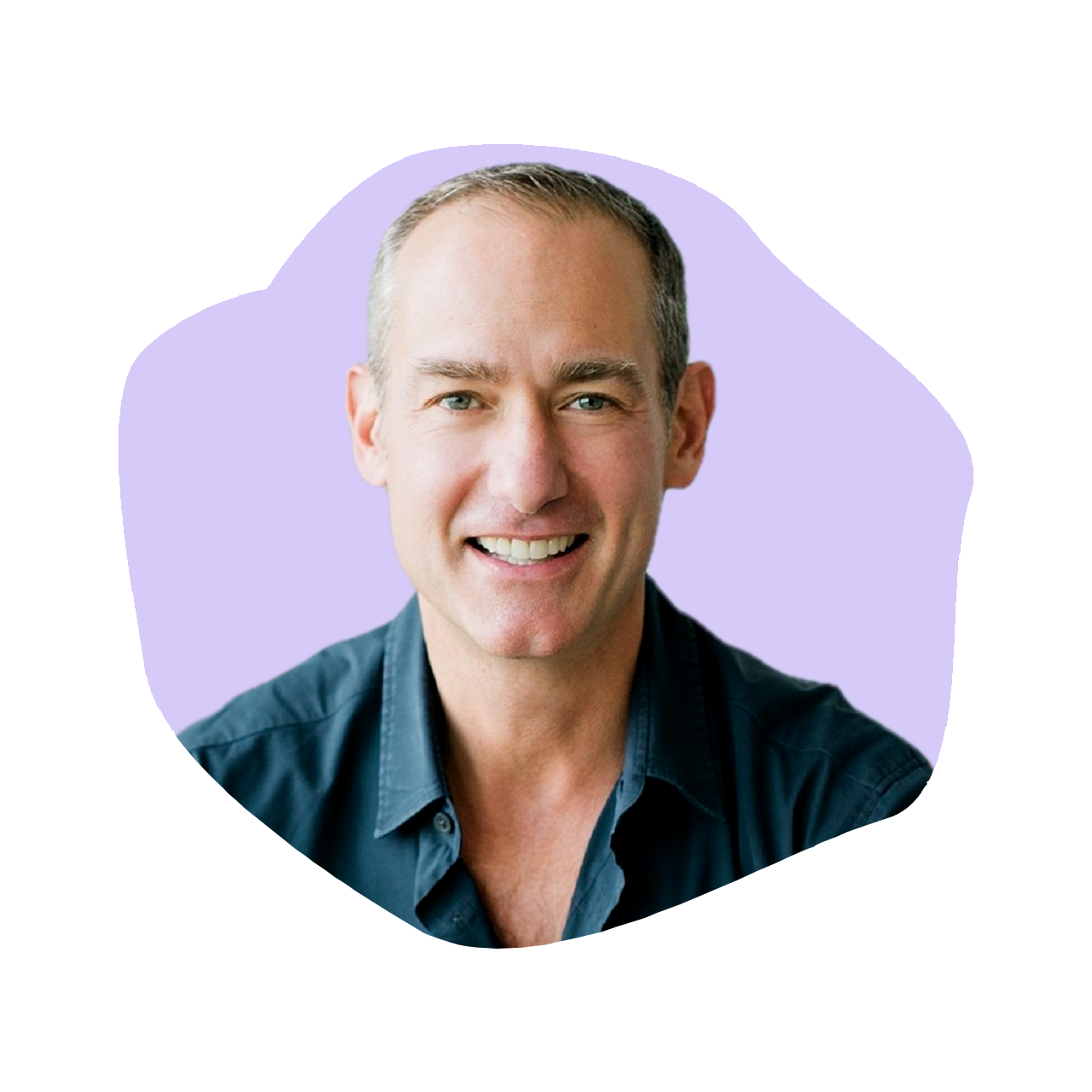
752
Mark Rampolla: Author of An Entrepreneur’s Guide to Freedom and Founder of ZICO
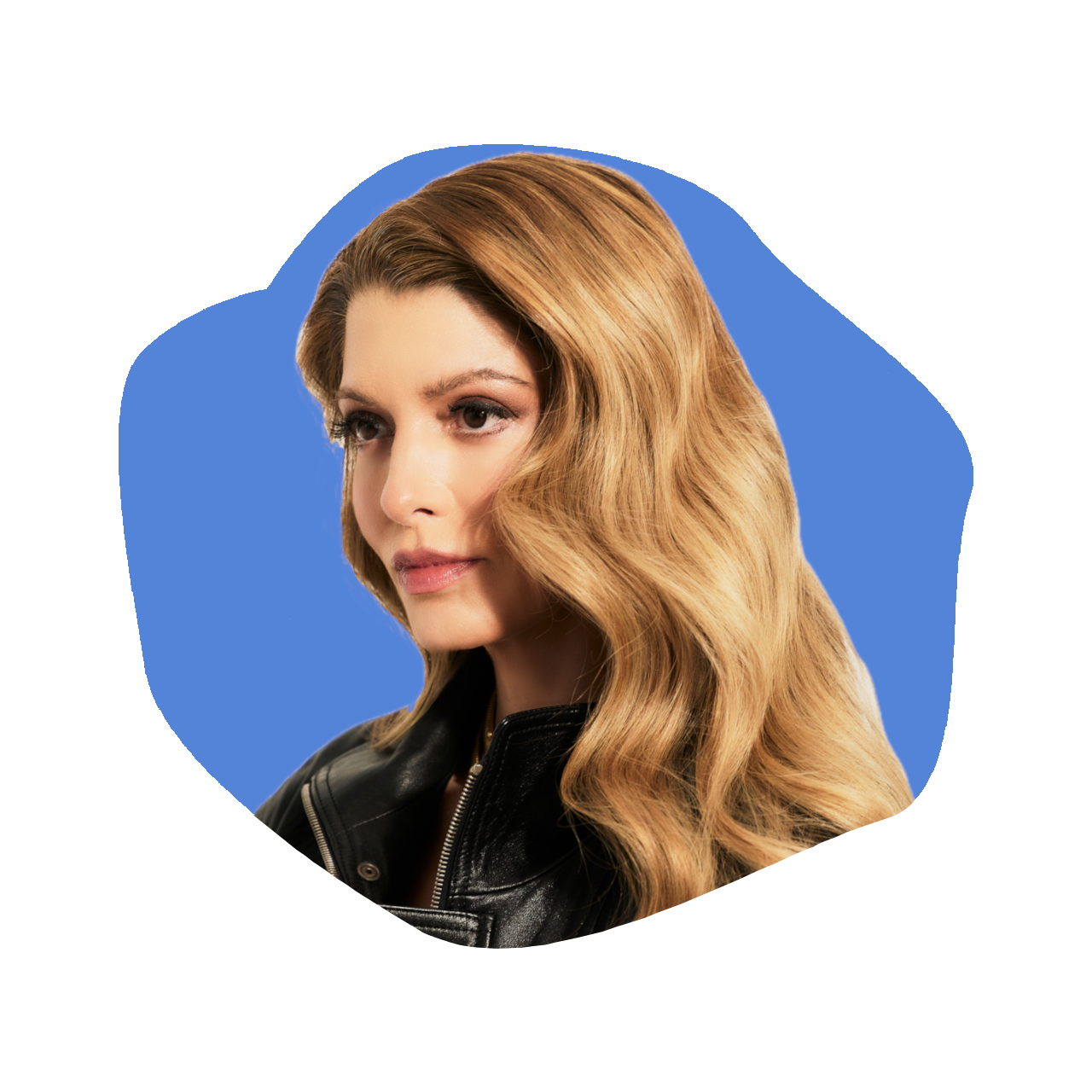
751
Deborah Pagani: Founder of Deborah Pagani Beauty
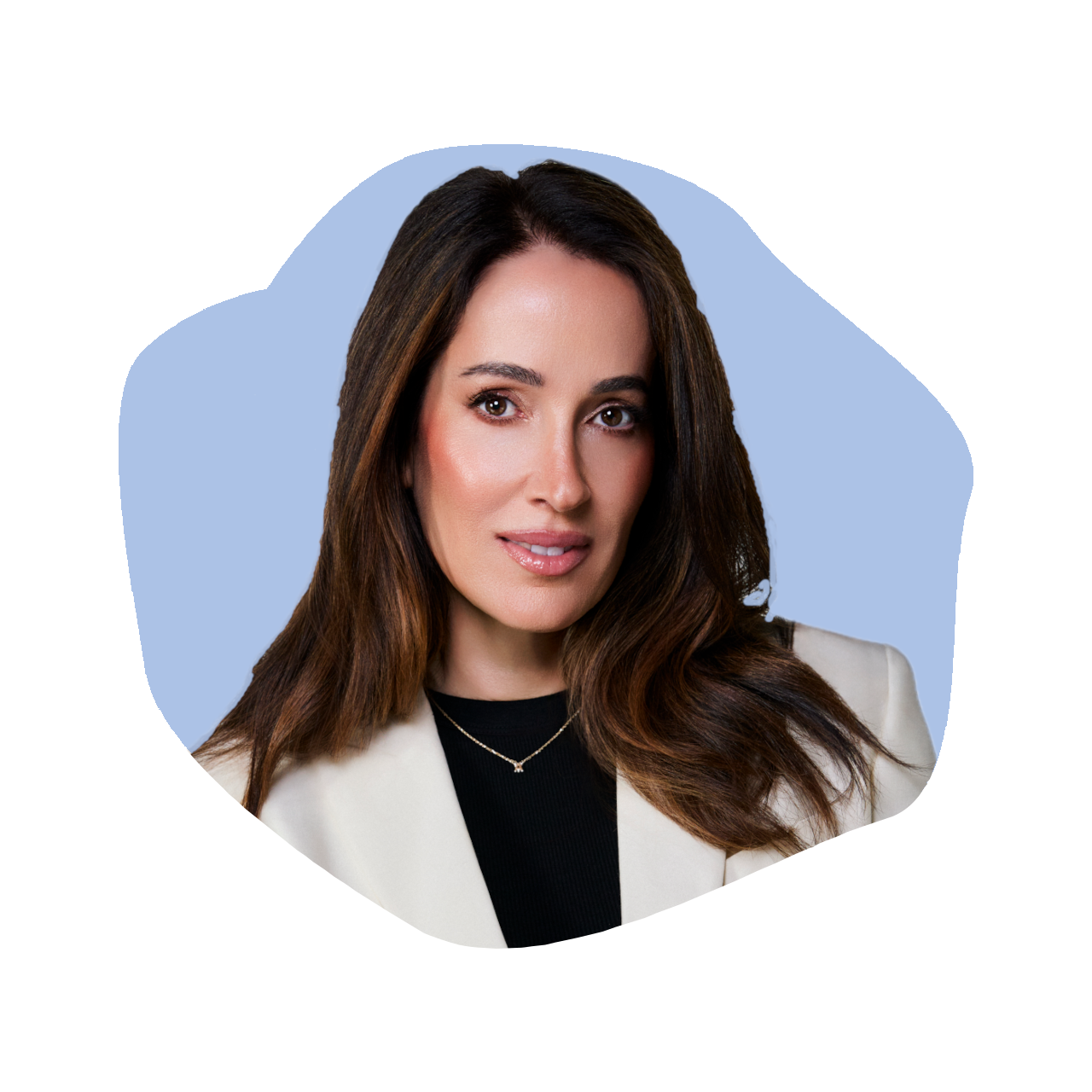
750
Angela Caglia: Founder & CEO of Angela Caglia Skincare
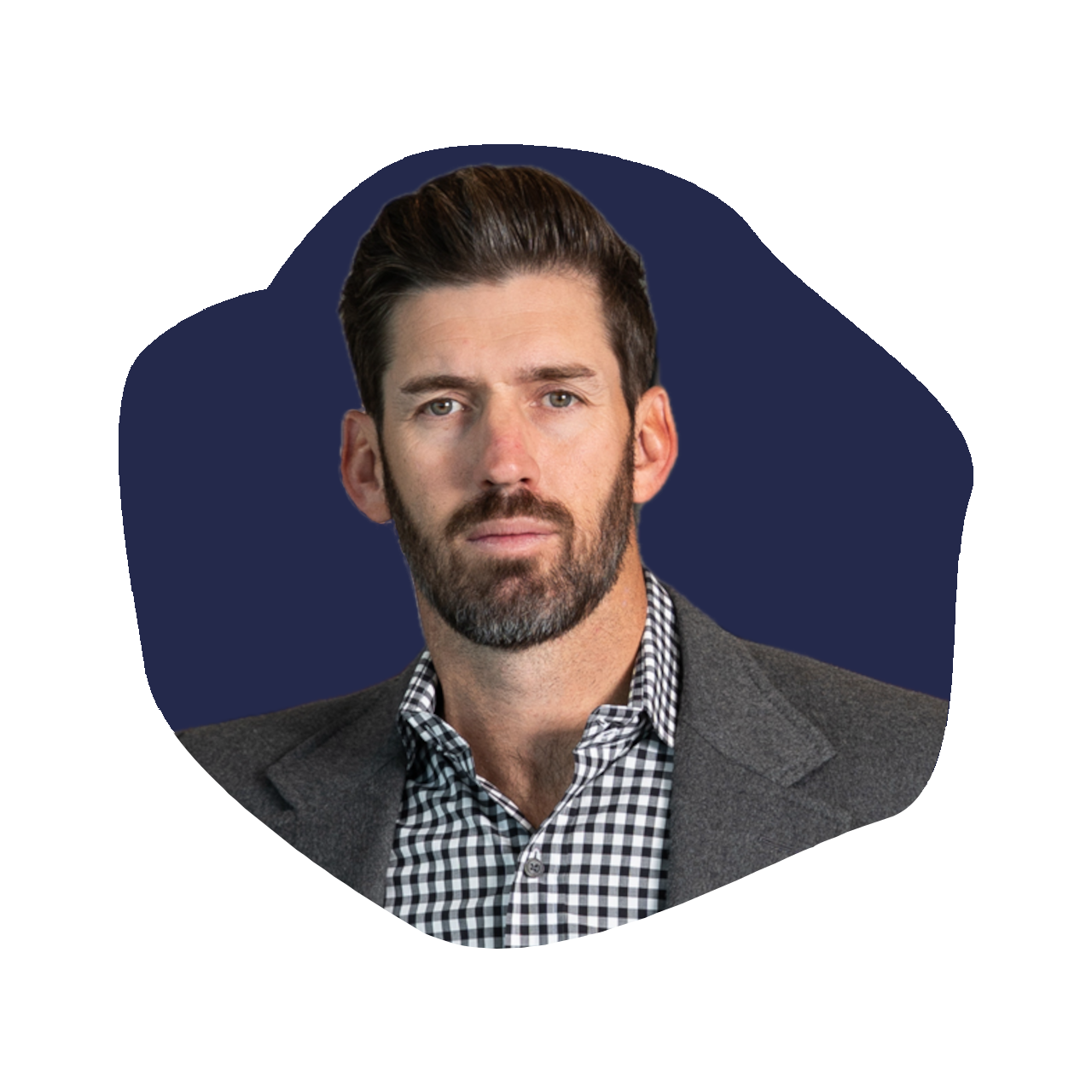
749
Doss Cunningham: Chairman & CEO of Nutrabolt

748
Cheree Ashley: Founder & CEO of Osier




